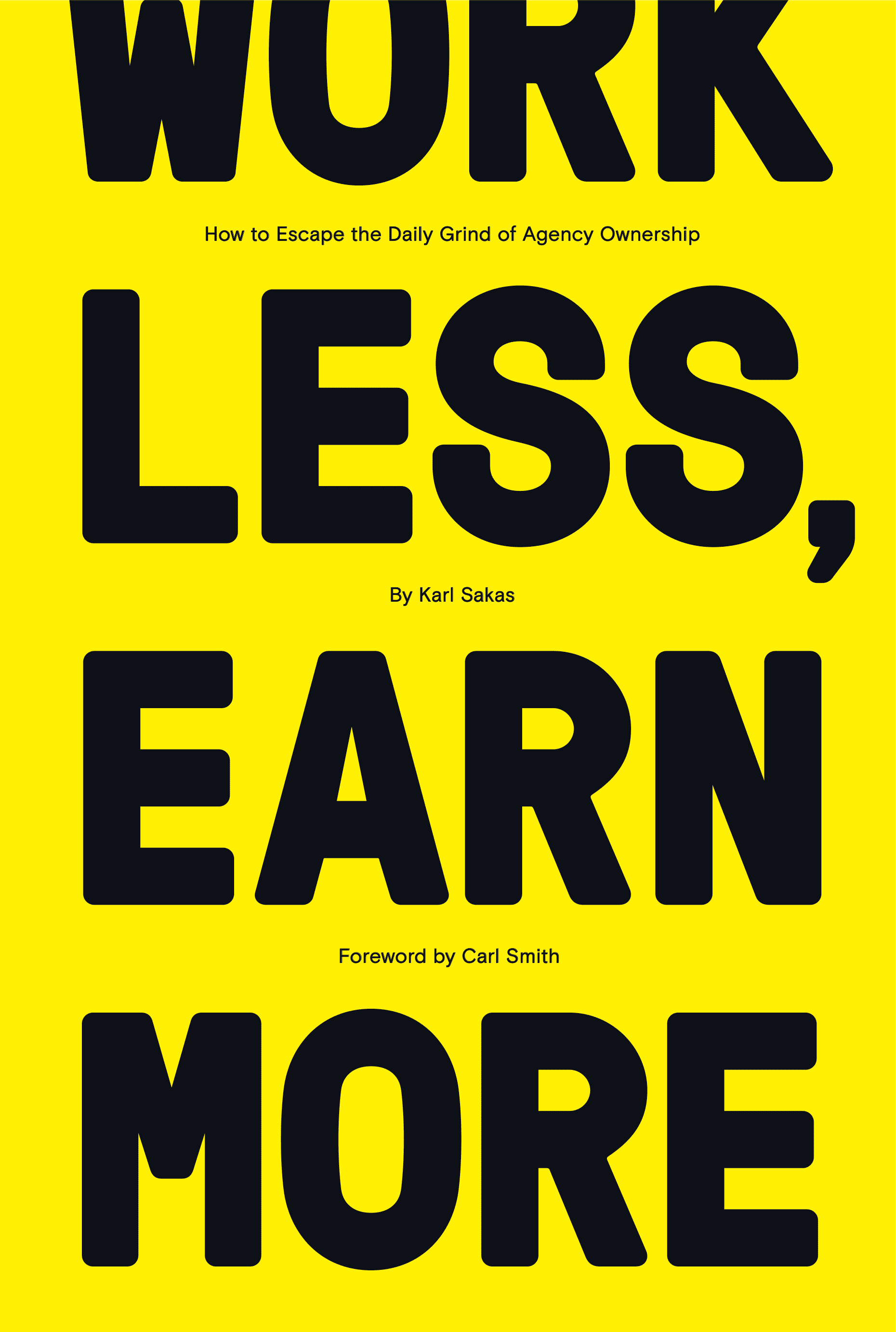Are you in a situation where key clients see you as their day-to-day contact at your agency? That’s not good—for agencies with more than 5-10 employees, the owner shouldn’t be the primary client contact.
Yes, you can swoop in and do fun client strategy work—and you’ll likely be involved in some degree of the sales process—but you shouldn’t be the primary contact.
Why? Being the contact for every client doesn’t scale, so it hurts your ability to run the agency. You’ll never meet your financial goals, whether you want a Lifestyle agency or Equity agency.
You can fix this! It starts by passing new clients to someone else on your team.
Start with New Clients First
Switching long-term clients could easily take months or a year—or may never be doable, for some clients. Today, we’ll focus on brand new clients, who aren’t already used to your being their contact.
My goal is to make you “needed, but not necessary“—so you can occasionally escape your email prison.
We’re going to start by transitioning new (incoming) clients—where you’ve qualified them but haven’t closed the sale yet—or at least, haven’t onboarded them. New clients are low-hanging fruit.
Overarching Concept: You Create Clients’ Reality
All clients know about your process is what you tell them (and demonstrate). Your new clients [likely] have no idea that you’re the primary contact for past clients. But, in your role as salesperson (and head of the agency), you still get to have some contact with them.
People/Roles Required to Delegate Clients
- You (owner of the agency)
- Salesperson (qualifying and closing the prospect)
- Account Manager or Project Manager (client’s day-to-day contact at your agency… owns client requests and staying on track)
- Strategist (expert on advising the client about marketing… the person who “owns” ensuring work is on-strategy)
- Implementer (“technician” to build what client bought)
Note that the AM/PM and Strategist may be the same person. The Strategist may be doing Implementer work, too, and as the owner, you may be the Salesperson as well.
Let’s look at the process you’d create to introduce this to new clients.
Rollout Process: What You’ll Say, When
You’ll want to customize this to your agency’s situation. Fewer people (across all the roles) can make it easier, since there’s less internal coordination.
- “We’ve got a great team! You’ll get a dedicated account manager, focused on taking care of your needs. You’ll meet them in a week or so, once we sort out if there’s a fit for us to help you.”
- “Let’s discuss how we can help you. When we’ve done similar projects, we typically see a budget range of $X,000 to $Y,000. If that’s in line with your budget, we’ll dig into specifics.”
- “Based on what you’ve shared, our PM team created a proposal. _<Name>_, your account manager, will share a high-level summary now of what to expect.”
- “Glad to hear you’re ready to go! As your account manager, _<Name>_ will forward the contract, SOW, and invoice. I’ll be at kickoff, and I’ll check in occasionally to make sure we’re taking good care of you.”
- [AM/PM sends around the pre-kickoff survey. PM creates project plan.]
- [You’ll attend kickoff, led by AM/PM. Clarify any client misunderstandings from pre-kickoff survey.]
- [A couple weeks in:] “How’s it going with your account manager? What do you like so far? What should we change?”
- [Every 4-6 months during project:] “How do you like what you’re getting so far? _<Name>_ said they really enjoy working with you.”
- [At or approaching wrapup or debrief:] “We learned this, this, and this. Next time, we’d do X, Y, and Z. Ready to move to an ongoing retainer to help you keep up the momentum?”
There’s flexibility as you customize this process to your agency—for instance, you could have the PM create the project plan and the Strategist present it (if the AM is not the Strategist). And you and the salesperson (if you’re not the salesperson) can trade off some of the post-kickoff check-ins.
Your Role as the Owner/Salesperson
This is about getting the client excited about the possibilities and your team’s ability to execute. Recognize that clients may miss you, because they get to know you well during the sales process.
Remember, you won’t disappear entirely—you’re checking in on a regular basis as things go. Your check-ins as the owner will help client satisfaction and prepare clients for upsells. You have the option of still helping with client strategy, but you shouldn’t be clients’ primary day-to-day contact at your agency.
Introduce Your AM/PM/Delivery Team Early
It’s important to involve your AM/PM/delivery team fairly early—once you (or your salesperson) have qualified the prospect on budget, need, and urgency. This trains clients to expect to work with others, not just you. (But not too early, because you don’t want to risk pulling people off billable work for an unlikely prospect.)
Be sure your team appears on the website. I recently advised a client on this—he had more than 25 employees, but his agency’s website didn’t have any people on it. You can’t blame clients for expecting to work with you if they think you’re the only employee.
Applying This at Your Agency
In a future article, I’ll talk through how to re-train existing clients so they don’t expect you to be their day-to-day contact. But you’ll want to implement this advice first, because you need to get the process down. If you don’t trust your team with clients, you need to fix that, too.
Question: As the agency owner, how do you let prospects know you won’t be their primary contact?


